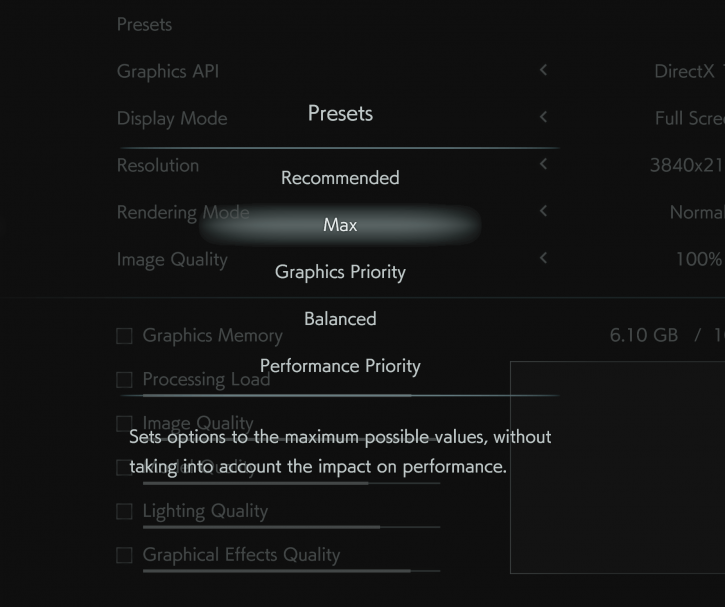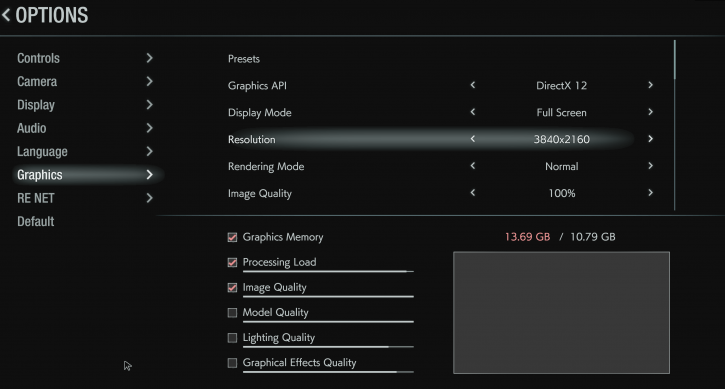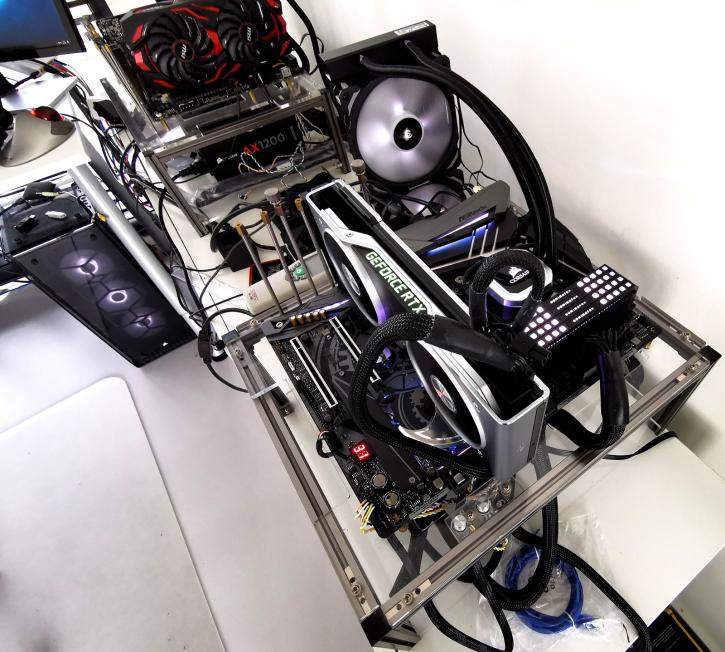Image Quality and System requirements
Image quality settings and benchmark system
Resident Evil 3 Remake (Nemesis) makes use of the RE Engine and it derfinitely looks better than the Resident Evil 2 Remake. Unfortunately, though, the game still suffers from the “noisy” reflections that plagued Resident Evil 2 Remake. Performance wise, our NVIDIA RTX 2080 Ti was able to offer a smooth gaming experience in 4K and on Max settings. In our opinion overall with a modern GPU, a 2560×1440 resolution will be ideal for this game.
Quality modes
The gamer offers multiple quality modes, MAX is recommended and the one we'll use. Keep in mind that if you have a graphics card with less than 8GB of graphics memory, the performance hit will become bigger, but it's still very acceptable with say a 6GB card. By default, Resident Evil 3: Nemesis’s frame rate cap is unlocked, so there is nothing you need to do to unlock it, VSYNC is enabled at standard though.
The best ultra quality mode is really playable gameplay-wise once you pass 2560x1440 as monitor resolution with a mainstream graphics card, here memory becomes an issue. The game makes use of DirectX 12. In the article, we'll also peek at performance with different quality modes, and obviously VSYNC disabled.
The graphics cards tested
In this article, we'll make use of the following cards at a properly good PC experience graphics quality wise, the quality mode as shown above with Vsync disabled (which needs to be done by editing a configuration file). The graphics cards used in this test are:
- GeForce GTX 1060
- GeForce GTX 1070
- GeForce GTX 1070 Ti
- GeForce GTX 1080
- GeForce GTX 1080 Ti
- GeForce GTX 1650 Super
- GeForce GTX 1660
- GeForce GTX 1660 Super
- GeForce GTX 1660 Ti
- GeForce RTX 2060
- GeForce RTX 2060 Super
- Geforce RTX 2070
- GeForce RTX 2070 Super
- GeForce RTX 2080
- Geforce RTX 2080 Super
- GeForce RTX 2080 Ti
- GeForce Titan Xp
- Radeon RX 470
- Radeon RX 480
- Radeon RX 5500 XT (8GB)
- Radeon RX 5600 XT
- Radeon RX 570
- Radeon RX 5700
- Radeon RX 5700 XT
- Radeon RX 580
- Radeon RX 590
- Radeon RX Vega 56
- Radeon RX Vega 64
- Radeon VII
Our graphics card test system is based on an eight-core Intel Core i9 9900K processor on the Z390 chipset platform. Next, to that, we have energy-saving functions disabled for this motherboard and processor (to ensure consistent benchmark results). We use Windows 10 all patched up. Each card runs on the same PC with the same operating system clone.
System Spec
- Core i9 9900K
- Z390 (ASRock Tachi Ultimate)
- 32 GB DDR4 3200 MHz CL16
- NVMe M.2. SSD WD Black
Graphics drivers
- GeForce graphics cards use the 445.78 (download).
- Radeon graphics cards we used the latest AMD Radeon Adrenalin 20.4.1 driver (not yet available) (download).




